Nose Surgery in Kuala Lumpur
Search and Compare the Best Clinics and Doctors at the Lowest Prices for Nose Surgery in Kuala Lumpur

Find the best clinics for Nose Surgery in Kuala Lumpur
With Medijump you can browse 4 facilities offering Nose Surgery procedures in Kuala Lumpur. The cheapest price available is $1,009 in Kuala Lumpur. And for the cheapest price globally, prices start from $101 in Poland.
Nose Surgery in Malaysia
Price: $ 1,009
Nose Surgery in Kuala Lumpur
Price: $ 1,009
Poland offers the best prices Worldwide
Price: $ 101
From 139 verified reviews
Koh Chun, 11 January 2022
All the staff is excellent, they are professional and caring.
From 132 verified reviews
Derf B. Sibal, 19 September 2020
Staffs are very kind and responsible, great quality service! I’ve been getting a five star service in five years now! Keep up!
From 6 verified reviews
MS NOAH, 07 September 2020
Thanks to Dr.cheong and other doctors. Very good service and satisfied. Dr expertise and concern made me fall in love with returning to this clinic. Very professional in providing information before performing any surgery .I will come back in the future.Thank you to the other staff for being very caring and very satisfied with the work. Miss you back here again. Thank you all . highly recommend for those who want aeshetic beauty .
Prince Court Medical Centre, can be found in Ampang, Kuala Lumpur, Malaysia and offers its patients Nose Surgery procedures as well as 23 other procedures, across 8 different procedure categories. At present, there is no pricing information for Nose Surgery procedures at Prince Court Medical Centre. The pricing information is quite specialised, so it's only available on request, and the average price is around $1,863. The lead specialist at the Hospital will be carrying out all the treatments, and Prince Court Medical Centre is accredited by just one known accreditations institute, MMC - Malaysian Medical Council
Compare Before & After Photos of _procedure_photos.phpNose Surgery
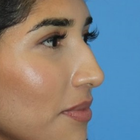
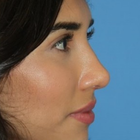
Full-side view
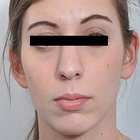

Front view
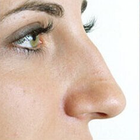
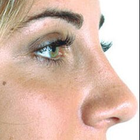
Full-side view
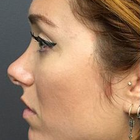
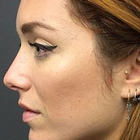
Full-side view
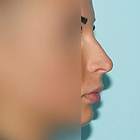
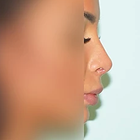
Full-side view

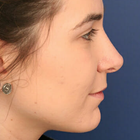
Full-side view
WHY US?
At Medijump, we're making medical easy. You can search, compare, discuss, and book your medical all in one place. We open the door to the best medical providers worldwide, saving you time and energy along the way, and it's all for FREE, no hidden fees, and no price markups guaranteed. So what are you waiting for?

Free

Best Price

Widest Selection

Risk-Free
What you need to know about Nose Surgery in Kuala Lumpur
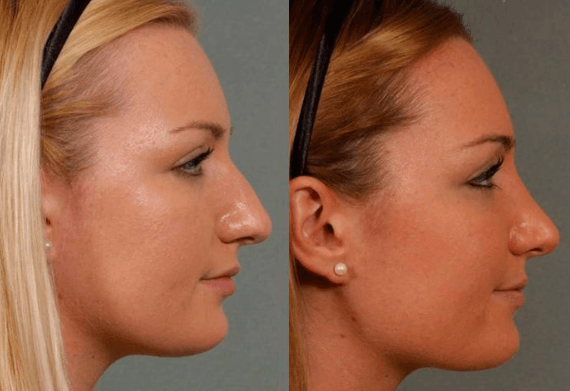
Commonly referred to as a Rhinoplasty, it is the medical term for reshaping of the nose or corrective surgery of the nose. It is one of the most common facial plastic surgeries (Facelift) procedures performed. Nose surgery can be performed to change the consequence of genetics, birth defect or nasal injury. It can be performed to enhance the appearance and/or to improve nasal breathing.
Surgery can be performed to correct nasal humps, the curvature of nose-bridge, nose tip irregularities, and asymmetry in the nostrils. The nasal appearance can be altered in various ways using intra-nasal chisels. Nose surgery procedures generally fall under three types: open rhinoplasty, closed rhinoplasty, and tip rhinoplasty. Rhinoplasty is normally performed under general anesthesia and will not leave any visible scars on the nose.
What does a Nose Surgery Procedure Involve?
Nose surgery is an individualized surgery. Before the surgery, you will need to discuss important factors with your surgeon to determine if it is suitable for you. Your surgeon will review your medical history, including your previous surgeries, medical conditions, and any medications you are taking. You will need to have a complete physical examination, such as blood tests. Your surgeon will also consider your other facial features, the skin on your nose, and what you would like to change or correct. Then, your surgeon will develop a customized plan for you. Two weeks before and after surgery, avoid any medications that contain aspirin or ibuprofen, such as Advil and Motrin IB because these medications can increase bleeding. You will need to also stop taking herbal remedies and over-the-counter supplements. If you are an active smoker, stop smoking because smoking can slow your healing process and increase the risk of getting an infection.
During the actual surgery, you will be given either local anesthesia or general anesthesia. The type of anesthesia depends on how complex the surgery is and what the surgeon would prefer to use. Then, the surgery will start by making incisions inside your nose or at the base of your nose between your nostrils. Your surgeon will reshape the inner bone and cartilage underneath your skin to make a more pleasing appearance.
There are several ways to change the shape of your nasal bones or cartilage, depending on your nose’s structure and how much needs to be removed or added. If only small changes are required, your surgeon may use cartilage taken from deeper inside your nose or your ear. However, for a much larger change, your surgeon may use cartilage from your rib, implants, or bone from other parts of your body. When the changes are finished, your surgeon will place the nose’s skin and tissue back. The incisions will be closed by stitches.
How Long Should I Stay in Kuala Lumpur for a Nose Surgery Procedure?
If everything goes well, you can go back to your hotel on the same day once the effects of anesthesia wear off. However, you will need to stay in a recovery room for a few hours so the staff can monitor you. Some people may need to stay in hospital overnight. After you are discharged from the hospital, you will need to stay in Kuala Lumpur for at least 10 to 14 days for initial recovery, follow-up checkups, and for the stitches to be removed.
What's the Recovery Time for Nose Surgery Procedures in Kuala Lumpur?
The recovery period for nose surgery can be different from person to person. In general, 2 to 3 weeks is needed until you can get back to your full normal routine and 3 to 6 weeks until you can do any strenuous activity. However, you should be able to go back to work within a week, except if your job requires strenuous physical activity. You will feel gradually better each day in the first week. You will experience swelling, which can take six months to subside. The only people who will notice the swelling is you and your surgeon. Your final nose shape will be apparent after it is completely healed.
What sort of Aftercare is Required for Nose Surgery Procedures in Kuala Lumpur?
After the surgery, you may need to wear a nasal splint for the first week. The splint is used to protect and support your nose. Your nose may be congested due to swelling or from the nasal splint. You need to rest in bed with your head raised higher than your chest to reduce bleeding and swelling. For a few days after the surgery, you may also experience slight bleeding and drainage of mucus. Your surgeon may place a “drip pad” under your nose to absorb drainage.
Your surgeon may ask you to avoid strenuous activity, take baths instead of showers, avoid blowing your nose, eat high-fiber foods to avoid constipation, not to do any facial expressions (smiling or laughing), not wearing pull clothing and wear button-downs instead.
For at least several weeks after the surgery, do not rest eyeglasses or sunglasses on your nose to prevent pressure. You should also wear SPF 30 sunscreen when you are outside because too much sun can cause permanent irregular discoloration to your nose. Do not put anything such as ice or cold packs on your nose even though it is swelling as the swelling will go away faster by limiting your dietary sodium.
What's the Success Rate of Nose Surgery Procedures in Kuala Lumpur?
Nose surgery is known to have around 80% to 90% success rate. Nevertheless, just like any other surgery, it still has possible risks and complications. These risks are bleeding, infection, numbness, permanent nerve damage, and an adverse reaction to the anesthesia. You should call your surgeon immediately if you suspect any of the symptoms. Other possible risks are difficulty breathing through your nose, uneven-looking nose, persisting pain, swelling, and discoloration, scarring, septal perforation, and the need for a second or third surgery.
For an in-depth analysis of the closed rhinoplasty procedure with before and after images, watch this short video.
Are there Alternatives to Nose Surgery Procedures in Kuala Lumpur?
If you do not want to undergo surgery, or if it is not suitable for you, you can get filler injections, such as Botox, Juvaderm, and Restylane. They can change the shape of your nose and only require a short visit to the doctor. This method is not painful and needs no incisions or stitches.
Whilst the information presented here has been accurately sourced and verified by a medical professional for its accuracy, it is still advised to consult with your doctor before pursuing a medical treatment at one of the listed medical providers
No Time?
Tell us what you're looking for and we'll reachout to the top clinics all at once
Enquire Now

Popular Procedures in Kuala Lumpur
Prices Start From $404

Prices Start From $111

Prices Start From $70

Prices Start From $220

Prices Start From $1,945

Prices Start From $192

Prices Start From $500

Recommended Medical Centers in Kuala Lumpur for Nose Surgery

- Interpreter services
- Translation service
- Religious facilities
- Medical records transfer
- Medical travel insurance
- Health insurance coordination
- TV in the room
- Safe in the room
- Phone in the room
- Private rooms for patients available

- Interpreter services
- Translation service
- Religious facilities
- Medical records transfer
- Medical travel insurance
- Health insurance coordination
- TV in the room
- Safe in the room
- Phone in the room
- Private rooms for patients available

- Interpreter services
- Translation service
- Religious facilities
- Medical records transfer
- Medical travel insurance
- Health insurance coordination
- TV in the room
- Safe in the room
- Phone in the room
- Private rooms for patients available

- Interpreter services
- Translation service
- Religious facilities
- Medical records transfer
- Medical travel insurance
- Health insurance coordination
- TV in the room
- Safe in the room
- Phone in the room
- Private rooms for patients available

- Interpreter services
- Translation service
- Religious facilities
- Medical records transfer
- Medical travel insurance
- Health insurance coordination
- TV in the room
- Safe in the room
- Phone in the room
- Private rooms for patients available

- Interpreter services
- Translation service
- Religious facilities
- Medical records transfer
- Medical travel insurance
- Health insurance coordination
- TV in the room
- Safe in the room
- Phone in the room
- Private rooms for patients available

- Interpreter services
- Translation service
- Religious facilities
- Medical records transfer
- Medical travel insurance
- Health insurance coordination
- TV in the room
- Safe in the room
- Phone in the room
- Private rooms for patients available

- Interpreter services
- Translation service
- Religious facilities
- Medical records transfer
- Medical travel insurance
- Health insurance coordination
- TV in the room
- Safe in the room
- Phone in the room
- Private rooms for patients available

- Interpreter services
- Translation service
- Religious facilities
- Medical records transfer
- Medical travel insurance
- Health insurance coordination
- TV in the room
- Safe in the room
- Phone in the room
- Private rooms for patients available

- Interpreter services
- Translation service
- Religious facilities
- Medical records transfer
- Medical travel insurance
- Health insurance coordination
- TV in the room
- Safe in the room
- Phone in the room
- Private rooms for patients available
Nose Surgery in and around Kuala Lumpur
About Kuala Lumpur
Kuala Lumpur is the capital city of Malaysia and often cited as the Food Capital of Asia. The city is modern on one hand and at the same time exhibits a rich cultural legacy.
Recognized globally, Kuala Lumpur is fast becoming a favored choice for medical tourism. Many individuals making the journey to this bustling metropolis can expect to conserve anywhere from 60% to 80% in medical expenses compared to the astronomical fees seen in the United States. The appeal doesn't end at affordable prices, the city's hospitals are reputed for their outstanding post-surgery care, ensuring patients feel comfortable and well-looked after. Supplementing the exemplary healthcare, these hospitals offer luxurious accommodation comparable to a five-star hotel suite, signaling a new standard for medical facilities worldwide.
Here is why Kuala Lumpur scores high in medical tourism.
- Extremely affordable and the quality of all treatments are of a high standard
- The Doctors are all certified and the teams are well trained
- Hospitals are world-class with the best amenities and modern surgical equipment
- Excellent post-operative care facilities to help with recuperating
Medical procedures including breast augmentation, varicose vein surgery, laser eye surgery, dental procedures, fertility treatments, oncology treatments and spinal surgeries are highly demanded in Kuala Lumpur. With state-of-the-art facilities, hospitals notably Pantai Hospital, HSC Medical Center, and Sikarin Hospital lead in providing these sought-after services.
Additionally, distinct local clinics situated in and around Kuala Lumpur, such as Dr. Cheong Plastic Surgery Clinic and KTOP Clinic, are particularly renowned in the field of breast augmentation. These institutions, aptly combining professionalism with empathy, embody the heightened standards of medical care in the city.
Popular areas in Kuala Lumpur
This city boasts a plethora of iconic attractions, spanning both naturally occurring wonders and impressive manmade structures:
- The Petronas: Hailed as the Twin Jewels of Kuala Lumpur, it is an 88-story twin tower. Thousands visit every day to walk over the sky bridge that connects the two towers to see the excellent bird’s eye view of the city. On a clear day, you can see as far as Indonesia.
- The Menara KL towers: This is the fifth tallest structure in the world today. Its observation deck is a hundred feet higher than the sky bridge that rests between the Petronas twin towers; What’s more, is that the ticket to the observation deck is completely free. Make sure that you reach there early because it has time slots to control the visiting number of people.
- China town: Is on Petaling Street and is surrounded by many very old historical shophouses and temples and is home to many local street food sellers. This 24-hour vibrant market township is the best place to shop if you love a bargain.
- The Batu Caves: is a limestone hill comprising three major caves and a number of smaller ones. The 100-year-old temple has idols and statues erected inside the main caves and around it. the temple is considered an important religious landmark by Hindus.
- The Open Aviary: Ever imagined an aviary where birds are not caged? That is the KL Open Aviary for you. Visitors are free to interact, feed, and even take photographs with the uncaged birds. It is one place you must not miss if you are a bird lover. There are more than 150 varieties to see and learn about.
Weather and Climate in Kuala Lumpur
In this city, residents and tourists alike encounter a tropical climate. Its persistent heat and humidity manifest in daily temperatures that typically fall between 29 and 35 degrees centigrade. Nighttime brings a touch of relative coolness, as temperatures drop to roughly 26 to 29 degrees centigrade.
While post-rain chills can occur, the city remains largely resilient to the monsoon winds coming from both the west and east. These sporadic showers pose minimal inconvenience as the city boasts well-structured covered walkways. A variety of indoor recreational complexes, inclusive of massive malls, guarantees an enjoyable pastime that doubles as shelter from the rain.
Getting around in Kuala Lumpur
The standard of public transportation within the city is second to none. A comprehensive network of buses and subway lines ensures swift and comfortable travel throughout the city, with affordable taxis providing an alternative for both longer and shorter journeys.
Showcasing their discipline, taxi drivers adhere meticulously to all road traffic rules and signs. For visiting tourists, the Hop-on-Hop-off service proves a favorite, offering a convenient tour that traverses the city, accompanied by an informative radio guide.
Tourist Visas in Kuala Lumpur
Citizens of 35 countries and the citizens of Commonwealth countries, including British protected citizens, Citizens from Ireland, Netherlands, Switzerland, San Marino, and Liechtenstein do not require a visa to enter Malaysia for up to 90 days.
Citizens of India, Bangladesh, Sri Lanka, Pakistan, and other countries will need to obtain a visa in advance before entering Malaysia. Visas can be obtained online or at a Malaysian embassy or consulate.
Additional Information
- Local Currency: The currency is the colorful Malaysian Ringgit. Further divided are cents or what the locals call as Sen. Coins are easy to handle. Ensure you carry enough local currency for the duration of your visit, as it is convenient to use shopping malls and local businesses. However, make sure to spend all the money you have exchanged before exiting the country because Malaysian Ringgit is not traded internationally.
- Money and payments: All retail outlets, restaurants, and eateries accept Master and Visa cards. You will also find ATMs, placed conveniently at all of the major tourist and shopping locations around the city.
- Local language: The Locals speak Malay and Arabic is also spoken widely. Nearly all of the population will understand and talk basic English.
- Local culture and religion: A large number of the population follow Islam and the second most popular religion in the city is Buddhism, there is also a small percentage of Christians and Hindus in the city. The culture is tolerant, and the people are extremely warm and friendly towards each other.
- Public holidays: The locals celebrate the Gregorian New Year, the Islamic New Year and the Chinese New Year. Apart from these, the other holidays include international May Day or worker’s day and the days connected with the Coronation of the Monarchy.
Popular Searches
- Plastic Surgery in Thailand
- Dental Implants in Thailand
- Hair Transplant in Thailand
- Breast Augmentation Thailand
- Gastric Sleeve in Thailand
- Gender Reassignment Surgery in Thailand
- Laser Hair Removal in Bangkok
- Botox in Bangkok
- Dermatology in Bangkok
- Breast Augmentation in Bangkok
- Coolsculpting in Bangkok
- Veneers in Turkey
- Hair Transplant in Turkey
- Rhinoplasty in Turkey
- Stem Cell Therapy in Mexico
- Rhinoplasty in Mexico
- Liposuction in Mexico
- Coolsculpting in Tijuana
- Rhinoplasty in Korea
- Scar Removal in Korea
- Gastric Sleeve in Turkey
- Bone Marrow Transplant in India
- Invisalign in Malaysia
- Plastic Surgery in the Dominican Republic
- Tummy Tuck in the Dominican Republic
- Plastic and Cosmetic Surgery in Poland
- Rhinoplasty in Poland
- Hair Implant in Poland
- Dental Implants in Poland
- IVF in Turkey



